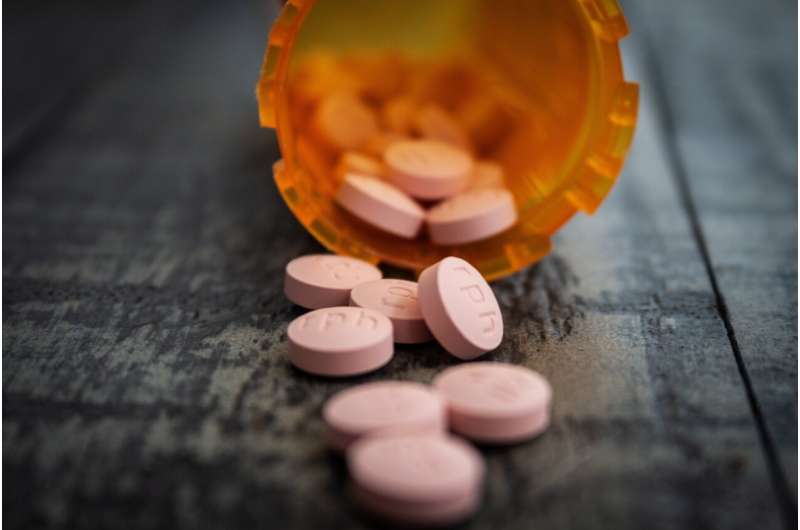
About 12 percent of patients who receive implantable cardiac devices such as a pacemaker or defibrillator and fill an opioid prescription after surgery will consistently use the pain medication in the months afterward, raising the potential for addiction following these common procedures and identifying another pathway that could contribute to the national opioid crisis, according to a new study by researchers at the Perelman School of Medicine at the University of Pennsylvania. The findings are published in Circulation.
Using data from a national insurance-claims database of adult patients undergoing cardiac implantable electronic device procedures from 2004 to 2018, the Penn researchers found that, of their sample of 143,400 patients, 15,316 patients filled an opioid prescription within two weeks of surgery. Of those patients, persistent opioid use—defined as filling another opioid prescription between one and six months after the procedure—occurred in 1,901 patients (who did not have a history of opioid use), or 12.4 percent, compared to 5.4 percent of patients without an initial opioid prescription.
“Even a small number of oxycodones can start the addiction process,” said senior author David S. Frankel, MD, an associate professor of Cardiovascular Medicine and director of the Cardiac Electrophysiology Fellowship Program at Penn. “The significance of this study is to make other electrophysiologists aware that even a low-risk procedure like a pacemaker or a defibrillator can lead to chronic opioid use and that physicians may want to be more conservative in prescribing opioids after surgery.”
Because opioids include a variety of medications containing oral hydrocodone, oxycodone, hydromorphone, tramadol, codeine and other drug types, the researchers converted the initial post-procedure opioid script—the prescribed dose multiplied by the total number of pills—into oral morphine equivalents to have a standardized measurement. They found that patients who received an initial dose of postoperative opioids exceeding 135 oral morphine equivalents—or 18 tablets of five-milligram oxycodone—were at higher risk for persistent opioid use.
With this prescription amount generally being lower than more invasive cardiac procedures, such as open-heart surgery, Frankel said it’s important for physicians to understand the risk of opioid dependence even with more minor procedures and that excessive opioid prescriptions increase the risk of subsequent dependence. The study, he said, supports lower opioid doses at discharge and using alternative pain management strategies, such as longer-lasting regional anesthesia during procedures, known as peripheral nerve blocks, or nonopioid medications like Tylenol and Advil after surgery. Patients should also receive clear counsel, Frankel said, to expect a few days of pain and to emphasize that experiencing this pain is normal and that it should get better.
In addition to these interventions by care teams, lawmakers and health care systems, including Penn Medicine, are taking various steps to reduce opioid prescriptions, such as limiting prescription supplies to a certain number of days or using automated text messaging systems to check in with patients on their post-surgery pain and opioid use.
Source: Read Full Article